Now that all our partner critics’ scores have been published, we have been able to feed them into Wine Lister’s bespoke algorithm to arrive at Quality scores for the Bordeaux 2016 vintage. The top 15 wines are shown below.
Wine Lister’s Quality score combines the ratings from our partner critics, three of the most respected critics in the world – Jancis Robinson, Antonio Galloni, and Bettane+Desseauve. A small weighting is also added for a wine’s ageing potential.
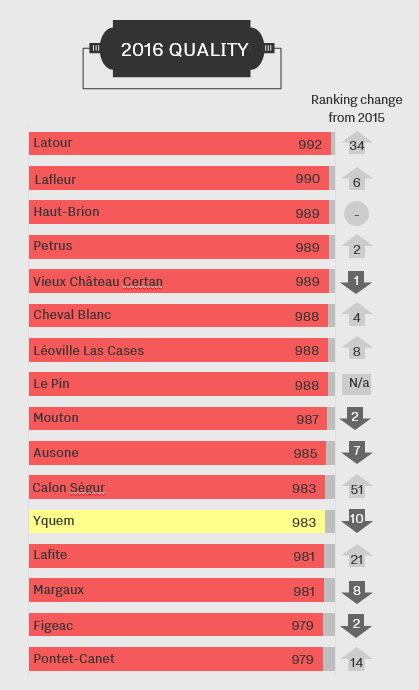
Ironically, the top wine of the vintage is Latour, not available to buy en primeur since the château withdrew from the system in 2012. The Pauillac first growth surged 34 positions up the table from last year, to 992 points for its 2016 Quality score.
Lafleur is just behind on 990, closely followed by Haut-Brion, Petrus and Vieux Château Certan. In fact, all the usual contenders make an appearance in the top 15, including the five first growths, their right bank equivalents such as Le Pin, Cheval Blanc, and Ausone, and Sauternes’ own first growth, Château d’Yquem.
Less obvious showings that are likely to represent better value include Calon Ségur, which improved a mammoth 51 places on last year, as well as Figeac and Pontet-Canet, in joint 15th position.
The top 40 2016 Quality scores will be listed in our upcoming Bordeaux market study, due for release later this week, and available to subscribers here. Alternatively, see the full ranking on the website.
Wine Lister’s US partner critic Antonio Galloni, of Vinous, released his scores for Bordeaux 2016 en primeur in a comprehensive article at the end of last week, and these now contribute to Wine Lister’s Quality scores for Bordeaux 2016 wines.
Galloni describes the vintage as one of balance and harmony, yielding “absolutely remarkable wines.” He awarded seven potential 100-pointers, including two first growths – Châteaux Margaux and Latour, as well as three top Pomerol wines – Lafleur, Le Pin, and Vieux Château Certan.
He was particularly impressed by Château Pichon Longueville Comtesse de Lalande, which he found “a deeply emotional, moving wine.” He also had his head turned by Saint-Emilion premier grand cru classé A, Château Pavie, which has shifted towards a more elegant style since 2014, and particularly this year, when Galloni calls it “seamless, sumptuous and super-expressive.”

After waxing lyrical about many of the wines from the 2016 vintage, Galloni turns his attention to the campaign, and to pricing, echoing the positive signs discussed in our recent blog post on this topic. Galloni concludes that given the quality of the vintage, “if the 2016s do not sell well, it will be a damning indictment that one or more things is seriously wrong with how the wines are sold.”
Galloni also appeared on Bloomberg TV to discuss whether 2016 is the Bordeaux vintage of the century. Watch his interview here.
Château Cos d’Estournel took everyone by surprise this morning when it released its 2016 vintage en primeur sooner than expected, at €120 per bottle ex-négociant, the same price as its 2015. Intelligence gathered by Wine Lister suggested that châteaux considered to have made “mistakes” with the release of their 2015 vintage en primeur might release early and at the same price as last year.
However, even the Place de Bordeaux was not expecting a second growth to release its wine the day after the first round of the French presidential elections, and just four days after the terrorist attack in Paris.
Cos d’Estournel is considered to have had a mediocre 2015 en primeur campaign compared to some of its peers, not necessarily pricing too high, but releasing too early. However, reports are that stocks did sell through later in year. Today’s move is bold, but could pay off, if Cos d’Estournel 2016 can harness the excitement that is growing around the Bordeaux 2016 vintage before it has too much competition.
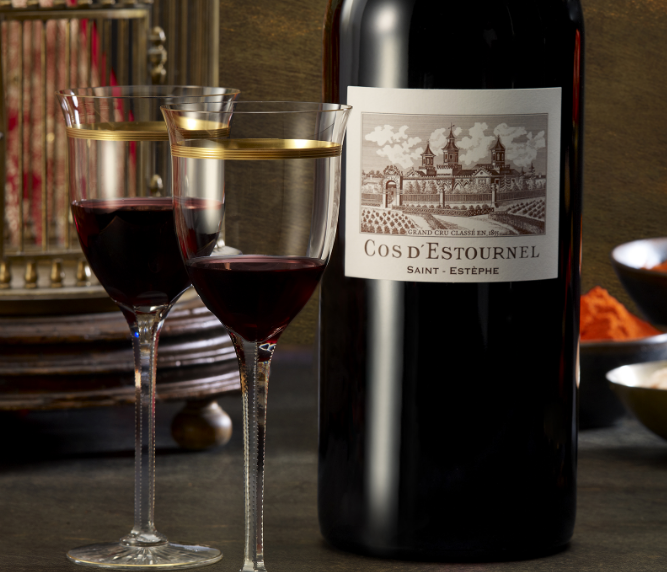
© Château Cos d’Estournel
By sticking to last year’s price, Cos is keeping the Bordeaux trade happy, and early reports are that négociants are wholeheartedly getting behind the release. The weak pound means that Cos d’Estournel 2016 is being offered to consumers in the UK at £117 per bottle, a 10% premium on the 2015 price of £106 per bottle. This might well be palatable given the quality of the wine this year and the goodwill shown by the château in not increasing its euro release price. UK merchants certainly seem to be enthusiastic in terms of their messages to consumers so far.
Wine Lister’s UK partner critic Jancis Robinson awarded the Cos d’Estournel 2016 18 points (compared to 18.5 for the 2015). Our French partner critics Bettane+Desseauve, and our US partner critic, Vinous, will release their Bordeaux 2016 scores later this week.
Our recent blog post reported the excellent quality of the Bordeaux 2016 vintage in the face of a tricky growing season, and discussed the generous yields that many producers enjoyed. In theory, the latter should keep en primeur release prices down. We took the temperature during our week in Bordeaux.
Olivier Bernard, President of the Union des Grands Crus de Bordeaux, declared that quantity is “good for the producers and for the people selling our wine, because it will help the château owners find the right price.” He went on to refer to the ease with which “mistakes” are made when quantity is low, a nod to over-zealous en primeur pricing in the past.
In a recent survey of Wine Lister’s 49 Founding Members (key global wine trade players), the average price adjustment for Bordeaux 2016 considered reasonable on 2015 was a decrease of 4%. Even the Bordeaux trade only suggest a 2% increase. It should be noted that this questionnaire was carried out prior to any tastings, and also that the trade’s interest naturally lies in curbing price rises by the producers.
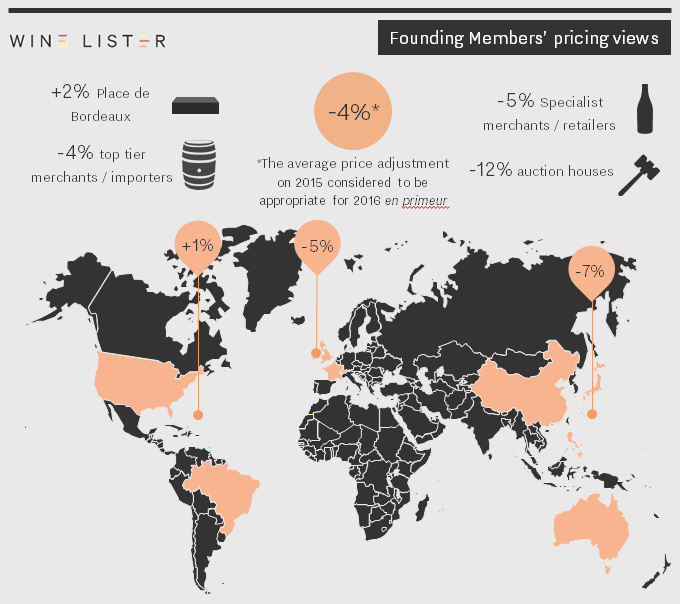
“What’s for sure is that prices to the consumer need to be significantly lower than current prices of physically available vintages such as 2005, 2009 and 2010,” asserted Stephen Browett, Chairman of Farr Vintners. “Why not allow all our distributors and consumers to make good buys and profitable sales of this vintage, with prices that are relatively stable compared to 2015?,” appealed Nicolas Ballarin, courtier at Blanchy et de Lestapis.
Wine Lister’s Founder, Ella Lister, is more sceptical, saying:
“I would be very surprised if Bordeaux 2016 prices do not increase on 2015, in some cases significantly. Every producer we spoke to said they would be upping prices on last year.”
“Price-wise I don’t think there is anyone who’s thinking about selling 2016 at a lower price than 2015,” confirmed Philippe Blanc, Managing Director of Château Beychevelle, hitting the nail on the head when he added, “the big question is how much more.”
This remains to be seen: the mood is broadly bullish but with a dose of caution. François-Xavier Borie, owner of Grand-Puy-Lacoste, summarised, “demand is good, and perception of the vintage is great,” concluding, “we will without doubt raise the price, but it shouldn’t explode.” His only fear is that things might be confused if certain châteaux adopt a different policy, going for “a high price on low volume.” Nicolas Glumineau, Managing Director of Pichon Longueville Comtesse de Lalande, agrees that partial releases at inflated prices are counterproductive, calling the approach “artificial”, and saying it “doesn’t work to sell only 50% at a higher price.” Pichon Comtesse usually sells 80% of production en primeur.
“It’s a great vintage so it will be expensive,” confirmed Glumineau, disclosing, “my ambition is to raise the price this year, yes.” He is acutely aware, as are his fellow Bordelais, of mitigating factors such as the impending French elections. A Marine Le Pen victory “would affect the stock markets”, he says, and “could devalue the euro relative to the pound.”
Referring to the weak pound post-Brexit, Didier Cuvelier, owner of Léoville Poyferré, admitted, “it’s true England worries us as it’s always what sets the tone of the campaign.” Emmanuel Cruse, Co-owner of Château d’Issan and Grand Maître of the Commanderie du Bontemps, Médoc, Graves, Sauternes and Barsac, cited political uncertainty in the UK, the US, and France, when he announced to a room full of producers and négociants, “we all know the situation isn’t stable, but we need to be positive as the vintage is great and we have made a lot of it.” Mathieu Chadronnier, Managing Director of négociant CVBG, observed, “I really feel a desire here in Bordeaux for this to be a successful campaign.”
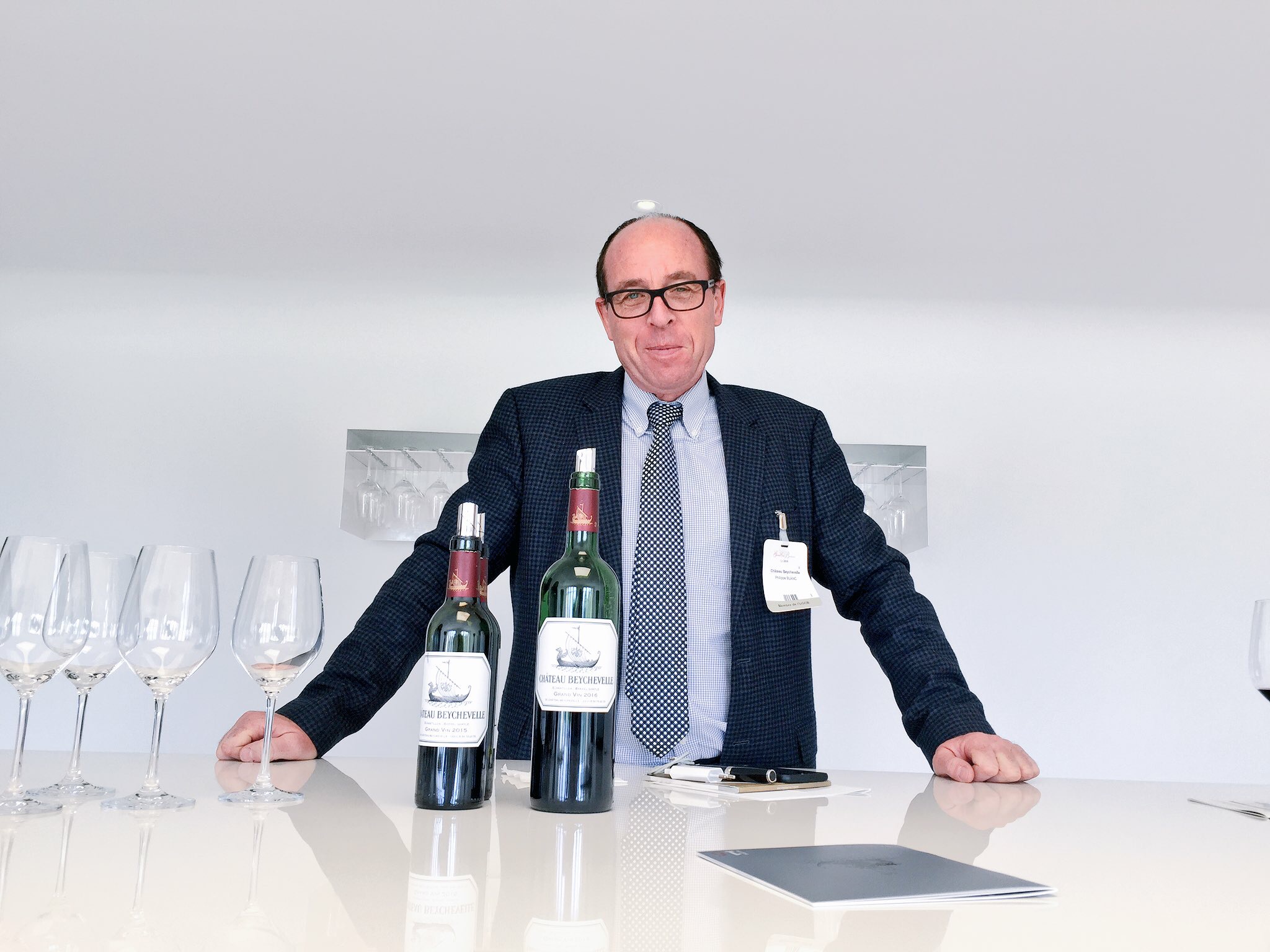
Philippe Blanc, Managing Director of Château Beychevelle, who will almost certainly raise the price on 2015, but won’t be first out of the block. Photo © Ella Lister.
How will this positive approach affect timing for Bordeaux 2016? A couple of sources hinted at the possibility of a handful of early releases at the same price as last year, either by châteaux who priced highly last year or perhaps first growths wanting to set a trend. However, by far the dominant view was that the campaign would be a long one, lasting until after Vinexpo (18th-21st June in Bordeaux).
“A good campaign is one where timing follows a pattern – crus bourgeois first, then the fifth growths, the fourths etc.,” expounds Glumineau. Blanc believes, “the general opinion is not to be quicker than need be,” saying “it’s good to have context,” and confirming that Beychevelle “definitely won’t be the leader timing-wise.” Lister concludes:
“We await the first releases with interest, because of course nobody can predict the campaign’s level of success until the party actually gets started.”
Check www.wine-lister.com in early May for our new Bordeaux study, and follow us on Twitter for real-time analysis of the releases.
The Wine Lister team is back from a week in Bordeaux tasting the 2016 vintage, and we can’t curb our enthusiasm. While the growing season was fraught with difficulty, a series of mini miracles allowed appellations across the board to make their finest wines since 2010. Most crucially, heavy spring rainfall was punctuated by a dry window during flowering, and intense summer drought was broken just in time by a dramatic rainstorm on 13th September, witnessed first-hand by Wine Lister’s Founder, Ella Lister, at Château Smith Haut Lafitte.

A sculpture at Château Smith Haut Lafitte as the storm brewed on 13th September 2016. Photo © Ella Lister
This vintage of extreme conditions has paradoxically resulted in the most balanced of wines, full of freshness. These are wines which, like the 1982 vintage in Bordeaux, will be approachable relatively early – possibly sooner than the 2010s – and will keep on going. Cheval Blanc’s Chef de Culture, Nicolas Corporandy, said that compared to the 2015, “the 2016 is fresher and more tannic”, adding, “they are very different vintages, a bit like the 2009 and 2010.”
However, apart from the odd reference to the 2009-2010 duo, 2016 was not likened to any existing vintage. Olivier Bernard, owner of Domaine de Chevalier and President of the Union des Grands Crus de Bordeaux, declared, “This is another expression – not a 2009 or 2010; we are working at a different level than a few years ago.” Many producers are touting 2016 as their best ever wine, and for once, they might not be exaggerating. “I really think honestly that it’s the most accomplished of all Pontet-Canets,” avowed Alfred Tesseron, owner of Château Pontet-Canet.
We were consistently impressed and delighted by the quality and harmony of the wines on left bank and right. In Lister’s words:
“Saint-Estèphe is driven, Pauillac poised, Pomerol blue-blooded, Saint-Emilion alluring, Saint-Julien classy, Margaux pure, and Pessac-Léognan seductive”.
Many wines exceeded our expectations, and we were especially delighted to return to Smith Haut Lafitte to taste the flawless range of wines and find them entirely unscathed by September’s hail.
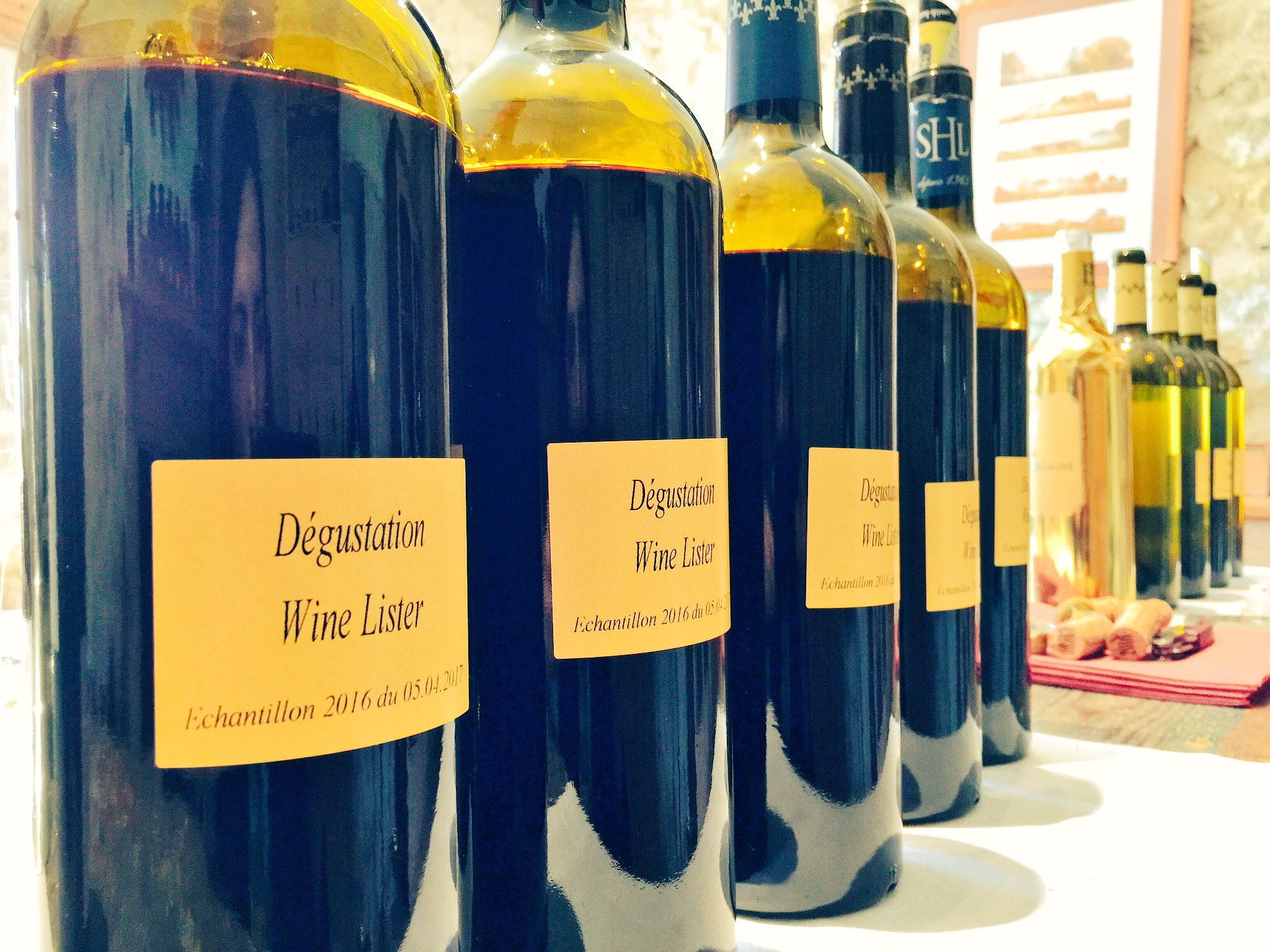
The excellent range of red and white wines tasted by the Wine Lister team at Château Smith Haut Lafitte in Pessac-Léognan. Photo © Wine Lister Limited
The even better news is that in general yields are higher than average (though with several exceptions, such as Châteaux Palmer, l’Evangile, and Léoville Poyferré). “With quality we have quantity and I love quantity,” quipped Bernard.
Why do yields matter? In theory, it should allow the producers to maintain reasonable prices if they have more wine to sell. As Nicolas Audebert, General Manager of Châteaux Canon and Rauzan-Ségla, put it, “Anyone who is intelligent will make their margins on the volume not on the prices; if the prices stay more or less the same when the quality is even better, everyone will be content”.
This could be wishful thinking. In the second instalment of this en primeur round-up we will explore the dynamics of the upcoming campaign, complete with the inside track from top producers and members of the trade regarding timing, pricing, and volumes, coming soon.
Check www.wine-lister.com for our partner critics’ scores over the coming weeks, and a new Bordeaux study, due for release here in early May.






